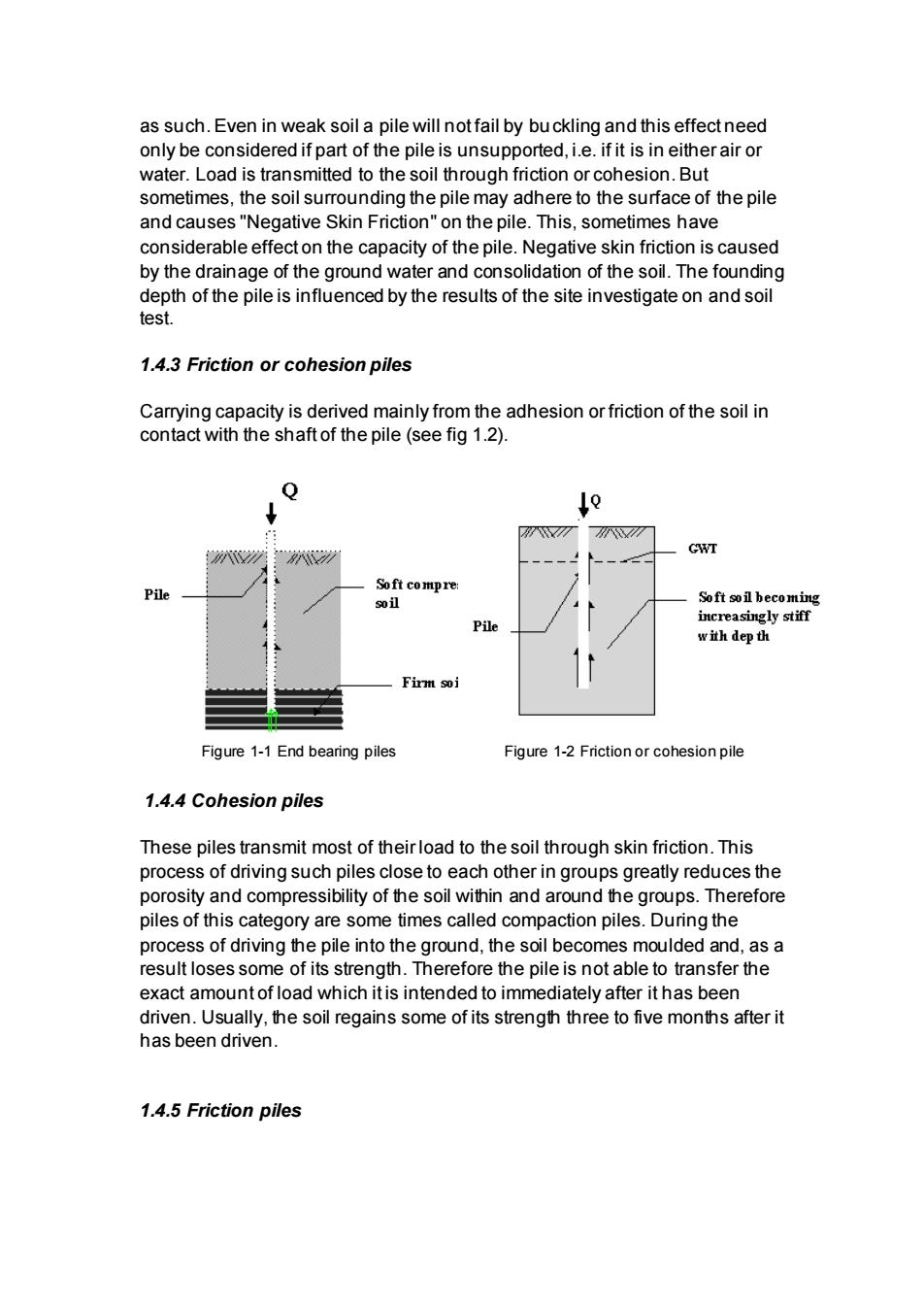正在加载图片...

as such.Even in weak soil a pile will not fail by bu ckling and this effect need only be considered if part of the pile is water.Load is transmitted to the soil through friction or cohesion.But sometimes,the soil surrounding the pile may adhere to the surface of the pile and causes"Negative Skin Friction"on the pile.This,sometimes have considerable effect on the capacity of the pile.Negative skin friction is caused by the dra nag eof the grounc ater and f the soil.The fou peis inuenced by the results of the site investigate on 1.4.3 Friction or cohesion piles Carrying capacity is derived mainly from the adhesion or friction of the soil in contact with the shaft of the pile(see fig 1.2). Soft soil be th dep th Firm soi Figure1-1 End bearing piles Figure 1-2 Frictionor cohesion pile 1.4.4 Cohesion piles These piles transmit most of theirload to the soil through skin friction.This process of driving such piles close to each other in groups greatly reduces the porosity and compressibility of the soil within and around the groups.Therefore piles of this category are some times called compaction piles.During the process of driving the pile into the ground,the soil becomes moulded and,as a result loses some of its strength.Therefore the pile is not able to transfer the exact amount 01 oad which itis intended to immediately after it has b driven.Usually,the soil regains some of its strength three to five months after it has been driven. 1.4.5 Friction pilesas such. Even in weak soil a pile will not fail by buckling and this effect need only be considered if part of the pile is unsupported, i.e. if it is in either air or water. Load is transmitted to the soil through friction or cohesion. But sometimes, the soil surrounding the pile may adhere to the surface of the pile and causes "Negative Skin Friction" on the pile. This, sometimes have considerable effect on the capacity of the pile. Negative skin friction is caused by the drainage of the ground water and consolidation of the soil. The founding depth of the pile is influenced by the results of the site investigate on and soil test. 1.4.3 Friction or cohesion piles Carrying capacity is derived mainly from the adhesion or friction of the soil in contact with the shaft of the pile (see fig 1.2). Figure 1-1 End bearing piles Figure 1-2 Friction or cohesion pile 1.4.4 Cohesion piles These piles transmit most of their load to the soil through skin friction. This process of driving such piles close to each other in groups greatly reduces the porosity and compressibility of the soil within and around the groups. Therefore piles of this category are some times called compaction piles. During the process of driving the pile into the ground, the soil becomes moulded and, as a result loses some of its strength. Therefore the pile is not able to transfer the exact amount of load which it is intended to immediately after it has been driven. Usually, the soil regains some of its strength three to five months after it has been driven. 1.4.5 Friction piles